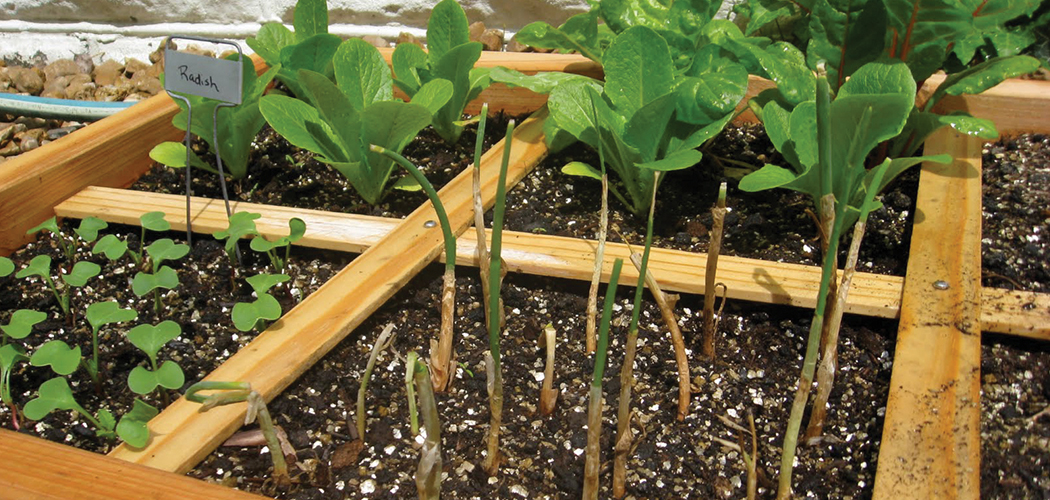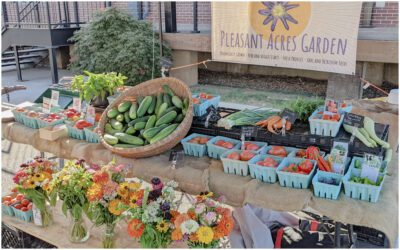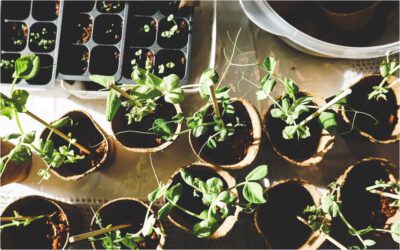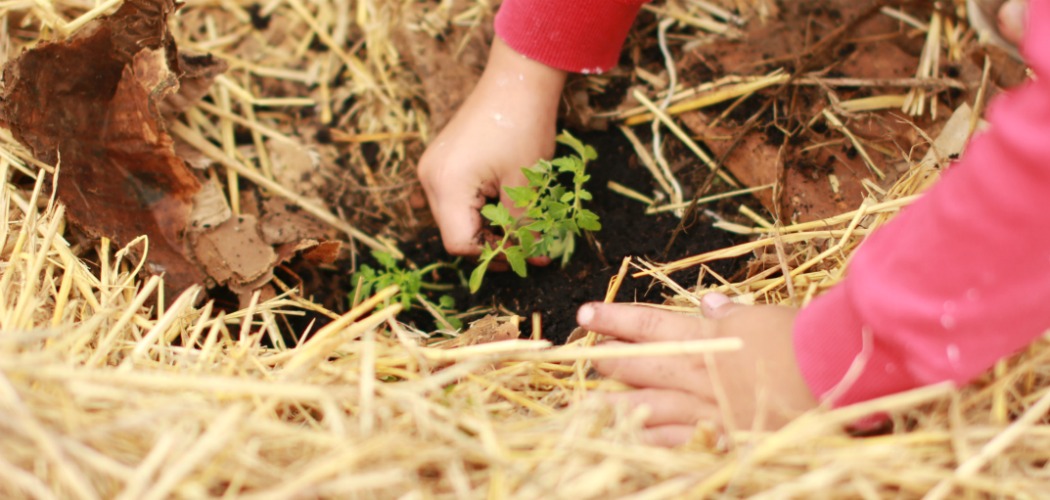[title subtitle=”words: Catherine Frederick”][/title]
Spring will soon arive and Jack Frost will make his quick exit, so it’s the time to plan your garden. Some of you may be interested in a better way to garden while others of you stare at that space of grass in the backyard and wonder where the heck to start. Many will tell you it’s all about the soil — and I agree. If you grow your soil, your soil can grow anything, but first you need a plan.
In the past, the only plan I had was to till up some dirt, make a long trench, dump in a bunch of seeds, then water and wait for the inevitable cluster of greenery to pop up. Then, of course, I’d spend hours thinning the plants out, destroying several of them in the process. Square foot gardening (SFG) swooped in just in time to save the day, and my garden.
A couple of winters ago, I read a book called, Square Foot Gardening A New Way to Garden in Less Space with Less Work. I shelved it for a while; it was a gardening book after all and I had not even begun to contemplate my spring garden. But several weeks passed and I got the itch to pick it up. I couldn’t put it down.
You see, even with all my hard work, my previous gardens had ended in a sea of weeds, pests, and very few vegetables. Now I was reading a book illustrating how I could grow a neat, attractive, weedless garden by planting in a uniform fashion in raised beds. And I could produce a rich harvest with less work. Rich harvest, less work? Count me in. I became a SFG fanatic.
What’s so great about square foot gardening, you say? For me, square foot gardening removes the guess work and takes gardening back to the basics. It’s not just another planting method, it’s a different mindset on how to garden. No more digging trenches and dumping in seeds. Anything can be grown in a SFG and it’s adaptable: large garden spaces or containers on apartment balconies, feeding one person or feeding the masses. If you have twelve inches of space, it can work for you.
SFG starts with a master plan. The bonus is that the plan is very visual with no room for error. It’s not about starting small, it’s about starting smart. You simply decide how much space you have to allot, how many people you want your garden to feed, and what type of vegetables you’re going to plant. One of the best tips I’ve ever been given about gardening is this: grow only what you know you and your family love to eat (say, tomatoes), then add one new plant to try this year (like eggplant).
As the name implies, SFG is about planting in squares, not rows. Each square is twelve inches by twelve inches, an area of one square foot. Each square contains a different vegetable or herb. The exact number of plants grown in each square depends on the type of vegetable and how much room the vegetable needs. Think that’s too much guess work? Think again! SFG details how many of each type of plants a twelve inch square can accommodate. It really is as simple as building or buying a raised bed system, adding soil, dividing up the area in twelve inch squares, looking up how many of each plant can fit into each one, and planting.
Take my garden, for example. I don’t have a ton of room. It’s eight foot wide by three foot deep, a total of twenty-four square feet. I’ve planted carrots (sixteen/sq.ft.), tomatoes (one/sq.ft.), peppers (one/sq.ft.), garlic (nine/sq.ft.), radishes (sixteen/sq. ft.), onions (sixteen/sq.ft.), lettuce (four/sq.ft.) and cucumbers (one/sq.ft.). In just twenty-four square feet, I have the following plants: forty-eight carrots, four tomatoes, eight peppers, nine garlic, thirty-two radishes, thirty-two onions, eight lettuces, and two cucumbers! Several of those squares can be succession planted (replanting a new crop as soon as the original is harvested) and inter-planted (planting two crops simultaneously in the same area), allowing for a larger, continual harvest.
Once you lay out your garden on paper (see, I told you — it’s visual) it’s time to prep your soil. Do a quick soil test. Grab a clump of soil and squeeze it in your hands. Sandy soil feels gritty, silty soil like wet powder and clay soil is sticky. Depending on your soil condition, you may need to add compost, mulch, peat moss, or vermiculite — all of which breakdown and feed your soil. My favorite garden soil comes premixed from my local Farmers Coop.
And for goodness sakes, stay off of the soil! Walking on the soil packs it down, destroying the air pockets roots need to grow. When laying out your SFG, give yourself just enough room between each twelve inch square to weed (if not using the raised bed method) and harvest without stepping on the growing soil.
Now it’s time to decide whether you’re going to plant organically or commercially. Don’t be intimidated by an organic garden! The difference between organic and conventional gardening is simply the decision to use natural fertilizers and compost in conjunction with organic seeds/plants. You can find a full selection of organic seeds, and bags of organic soil mixtures and additives at your local Farmers Coop. (I like Burpee Signature, USDA 100% Certified Organic. They’re around twenty-five cents more per package than commercial seed.)
While it may take a bit more research and planning on the front end, the additional cost is minimal and you’ll be repaid time and again when you harvest the delicious, chemical-free vegetables you aren’t afraid to feed to your family, right off the vine.




